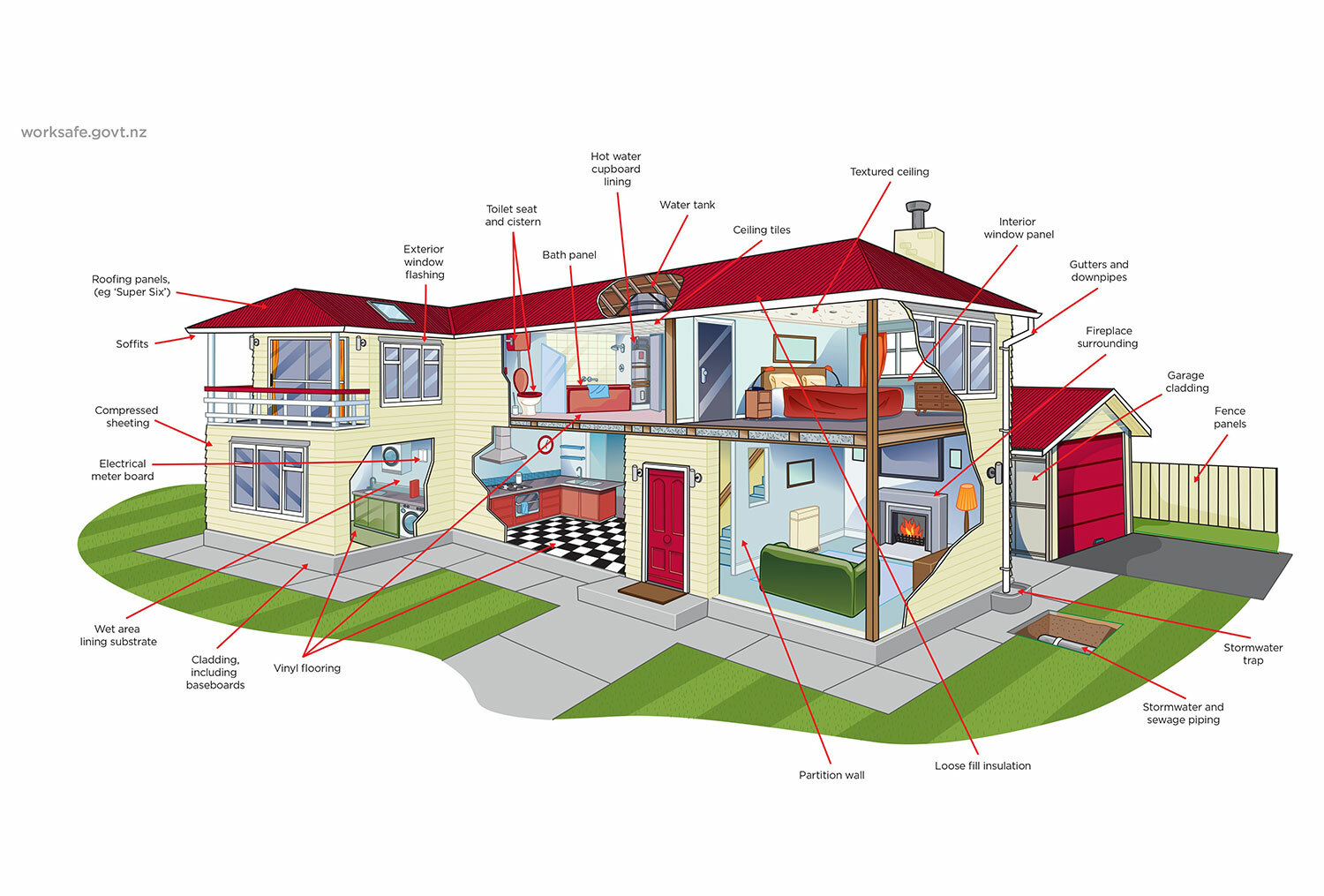Asbestos is found in many building products. In fact, it is known to have been used in over 3000 applications. Buildings built before 2000 are likely to contain asbestos materials somewhere within them. The final ban on importing asbestos materials from overseas did not pass until 2016. Although at this stage the health risks of asbestos were well documented, buildings built between 2000 and 2016 having asbestos within them can not be completely dismissed.
As we talked about earlier, one of the reasons for using asbestos in building products was because it was highly tensile. This means it was able to be manipulated into many different types and forms of materials. Our gallery shows some examples of asbestos materials throughout common buildings in New Zealand.
GALLERY

Asbestos materials in a good condition and left undisturbed pose very little risk to human health. It is only when the materials start to deteriorate and are damaged that the risk becomes very real.
As discussed, the dangers from asbestos come when the extremely small fibres become airborne and inhaled.
For this reason, it is important to know where the asbestos materials are around your home or workplace, particularly before starting any renovations, no matter how large or small. The most effective way to do this is to engage a reputable asbestos surveyor to complete an asbestos survey. These surveys aim to identify all asbestos within the scope of work and report on the condition of the material. Recommendations are given on each material based on the material information and the intended work.
If you are planning to engage a contractor to carry out any work, for example a builder or other tradesperson, you become a PCBU (person conducting business or undertaking). This means it is now your legal responsibility to identify asbestos materials which may be disturbed by the contractor. Rather hefty fines can be imposed, up to $50,000.

The only way to know 100% if a material contains asbestos is to have a small sample tested at an accredited laboratory. This can be achieved through a basic sample collection of materials of concern or a thorough detailed survey of an area or building. Learn more about the range of services to suit your requirements.
Learn More
There are many different approaches to dealing with asbestos materials. Asbestos removal eliminates the problem altogether. However, in some cases, it may not be the safest or most practical solution to remove all asbestos materials. There is also the immediate cost to consider. Identified asbestos materials can be kept in situ and managed. Find out about the options available to you.
Learn More
The Hazard Management team have developed an online asbestos awareness course which aims to help homeowners, business owners and tradespeople better understand asbestos and the dangers it can pose.
Learn More